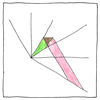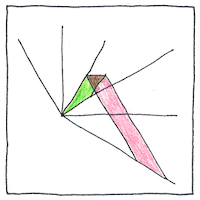George Francis FitzGerald
electromagnetism

|
Length contraction
Michelson and Morley couldn’t find any direction in which luminiferous aether slowed the speed of light. George FitzGerald thought he could explain their negative result without ruling out aether by suggesting that bodies contract along the direction of their movement. It happens that bodies do contract along the direction of their movement even though a better explanation happens to be that aether doesn’t exist.
Speed of light
Length contraction would not noticable unless the object were moving near the speed of light. To measure the length of an object we need to communicate with both ends of the object simultaneously, but no communication travels faster than the speed of light. Ack. Not so simple. If you travel with the object, it doesn’t change length as it speeds up. It changes length only when you sees it moving quickly away. I thought I understood this, but now I’m not so sure.
Happens to be
You cannot tell you cannot smell you cannot see it but experiment and reasoning can make it real



FitzGerald, Henri Poincaré, and Hendrik Lorentz believed in length contraction without knowing anything about relativity or why length contraction happens. They proposed it to explain why attempts to measure the effects of aether failed without giving up on the idea that aether exists. This goes to show you can be right even though you are wrong.
See also in The book of science:
Readings in wikipedia: